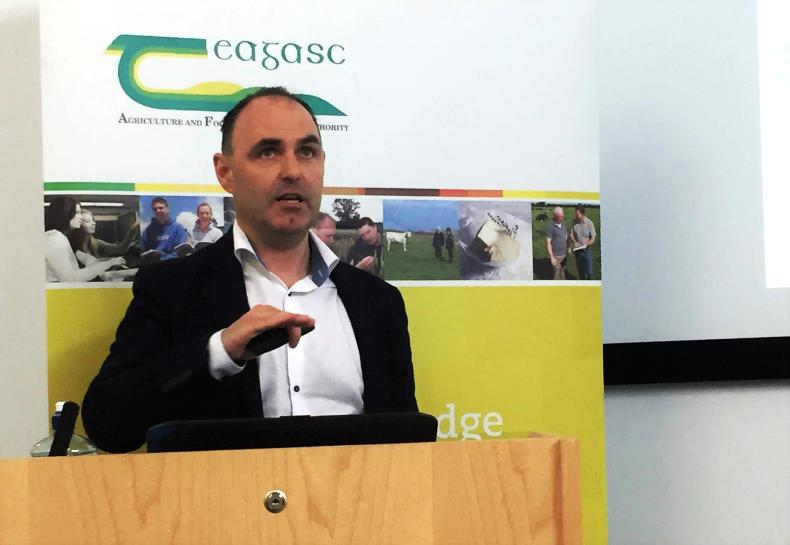The most profitable farms within the dairy, beef and sheep sectors emit the lowest amount of greenhouse gases and ammonia per kilogram of milk or meat produced, according to Teagasc’s sustainability report for 2017.
However, these also tend to be big farms with higher stocking rates, which means their overall emissions are larger and they are more likely to carry a nitrogen surplus, said Teagasc economist Cathal Buckley.
This highlights the need to bring less-efficient farms level with the top performers. For example, Teagasc head of drystock Pearce Kelly said maximising the beef liveweight produced per livestock unit was beneficial for farmers financially and for the environment – either by reducing the calving interval or the slaughter age.
Meanwhile, farmers who are already performing well are the main targets for the implementation of key climate measures identified by Teagasc last year, such as replacing CAN fertiliser with protected urea, or investing in better livestock genetics.
They also score higher on social and innovation indicators, such as education, age and participation in discussion groups, said Buckley.
“The burden of adjusting to the challenges of climate change and water is going to fall on the more commercial farmers,” added Teagasc director Gerry Boyle.
With reporting from Barry Cassidy.
Read more
Carbon intensity of livestock products continues to fall – Teagasc
Taoiseach places farmers at centre of climate plans
Oireachtas climate committee to reject farm carbon tax
The most profitable farms within the dairy, beef and sheep sectors emit the lowest amount of greenhouse gases and ammonia per kilogram of milk or meat produced, according to Teagasc’s sustainability report for 2017.
However, these also tend to be big farms with higher stocking rates, which means their overall emissions are larger and they are more likely to carry a nitrogen surplus, said Teagasc economist Cathal Buckley.
This highlights the need to bring less-efficient farms level with the top performers. For example, Teagasc head of drystock Pearce Kelly said maximising the beef liveweight produced per livestock unit was beneficial for farmers financially and for the environment – either by reducing the calving interval or the slaughter age.
Meanwhile, farmers who are already performing well are the main targets for the implementation of key climate measures identified by Teagasc last year, such as replacing CAN fertiliser with protected urea, or investing in better livestock genetics.
They also score higher on social and innovation indicators, such as education, age and participation in discussion groups, said Buckley.
“The burden of adjusting to the challenges of climate change and water is going to fall on the more commercial farmers,” added Teagasc director Gerry Boyle.
With reporting from Barry Cassidy.
Read more
Carbon intensity of livestock products continues to fall – Teagasc
Taoiseach places farmers at centre of climate plans
Oireachtas climate committee to reject farm carbon tax






 This is a subscriber-only article
This is a subscriber-only article










SHARING OPTIONS: